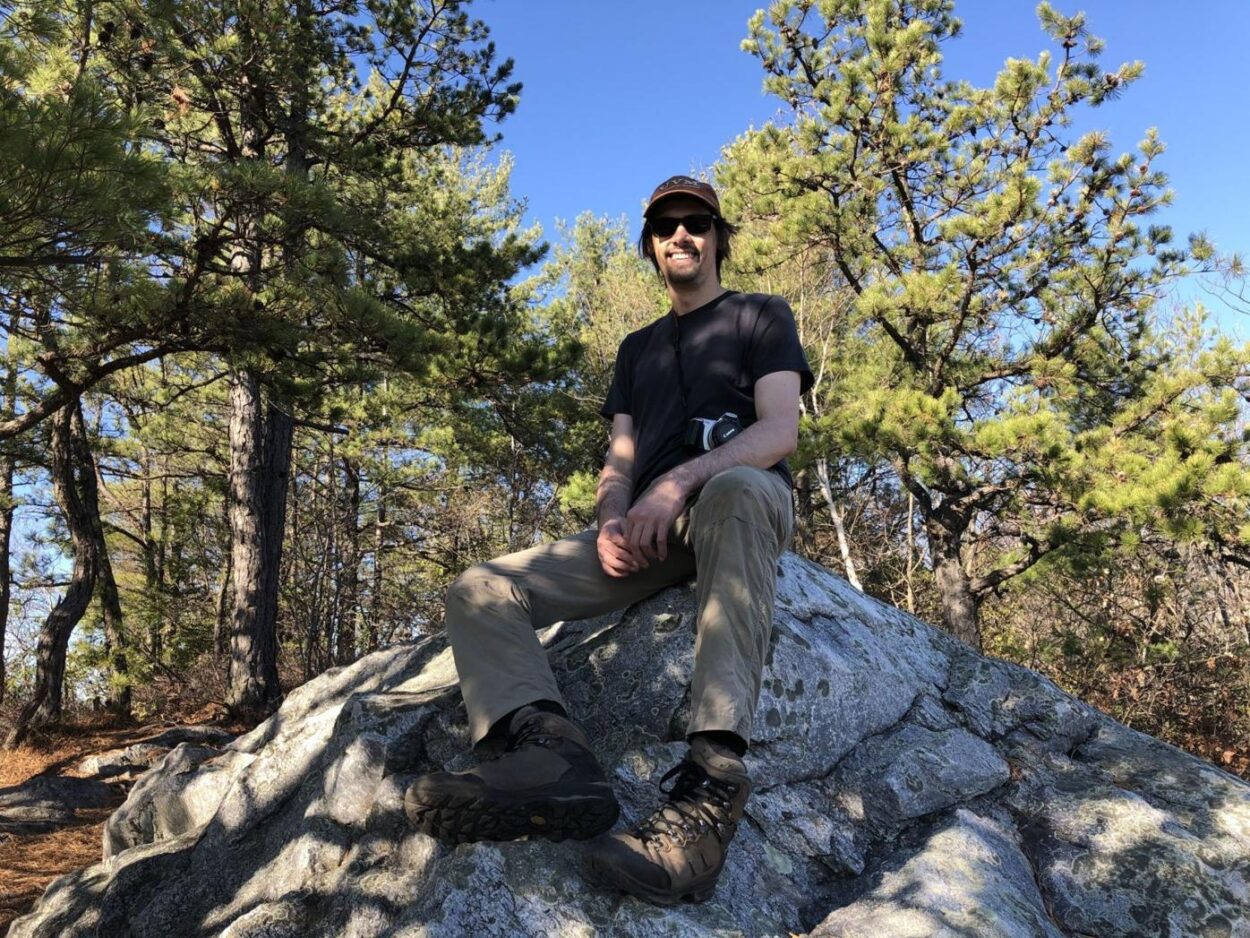Environmental Studies graduate student Kyle Bradford and Dr. Michael Akresh, Core Faculty in Environmental Studies program at Antioch University New England, were featured in the article Forest Journal: Where do the ants go marching? in the New Hampshire Union Leader.
Bradford and Akresh are currently studying the ant communities that inhabit dry oak-pine barrens and heathlands, a globally imperiled habitat type. Oak-pine barrens and heathlands are fire-dependent natural communities, requiring disturbance in order to keep other plant and tree species from invading and overwhelming them.
Akresh has conducted previous work on birds in these communities, which you can learn about more here. Sarah Shearer, another ES graduate student, is studying moth communities in these same ecosystems, and Bradford, Shearer, and Akresh will be presenting their work at the upcoming 2021 Northeast Natural History Conference (April 15-18).
“I love ants,” Bradford states in the article, “but mostly I love thinking about ants as a way to answer interesting ecological questions.”
Bradford is interested in looking at ants as indicators of ecosystem health and resiliency.
“Ants are keystone species in many habitats,” explains Bradford in the article. “They can affect plant distribution and abundance by consuming or moving seeds, turn and aerate the soil during nest building, and they are masters at finding and devouring dead insects. They also provide food for many woodland animals, from woodpeckers to black bears.”
To read more about their work and learn how you can contribute to scientific knowledge in New Hampshire visit here.





